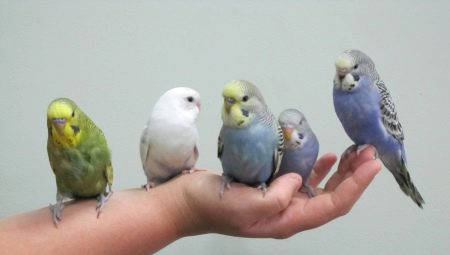Among the variety of birds suitable for keeping the house, budgies are the most popular. Everyone is familiar with these feathered bright colors that get along well with people and are able to give a lot of joy to all households. However, at first, a new family friend may be cautious in communication, and sometimes even be aggressive towards others. Because of this, many are wondering: what can be done for your new pet so that it quickly adapts to new conditions and begins to contact a person? What to do to quickly find a common language with a bird?
Taming a parrot depends on a number of conditions. This is the sex, age, and health status of the animal. No one has canceled the personality characteristics of a particular wavy - because they, like people, have different characters. With the right approach to a feathered friend, he will quickly begin to not only sit on your hand, but will also climb on your shoulder, and will be able to dance to your mood. In this article, we will cover all aspects of taming a parrot.
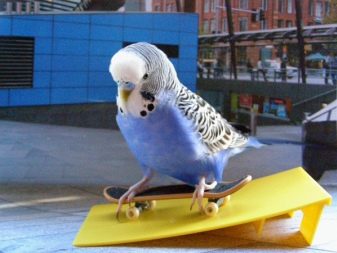
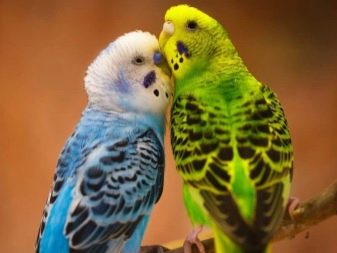
Features
Before you accustom a parrot to your hands, you need to get used to a new habitat. He must come to his senses after moving, get acquainted with his cell, study everything around, understand what he needs. In this case, you need to act gradually, step by step, as the rush will lead to the opposite result. So, if you try to grab a parrot against his will in order to pull him out of the cage, he may be so scared that he can no longer trust people. Here are the basic rules to help him get used to you.
- When you bring the parrot home, leave it in the cage for several hours, so that it gets used to its “house” and feels safe. Do not turn on the TV, music, vacuum cleaner - he is afraid of harsh sounds.
- Then begin to periodically approach the bird's field of vision and in a calm voice, gently speak with her.
- When adding food or removing the cage, you should do this carefully so as not to frighten the budgie. At the same time, communicate with him and call him by name.
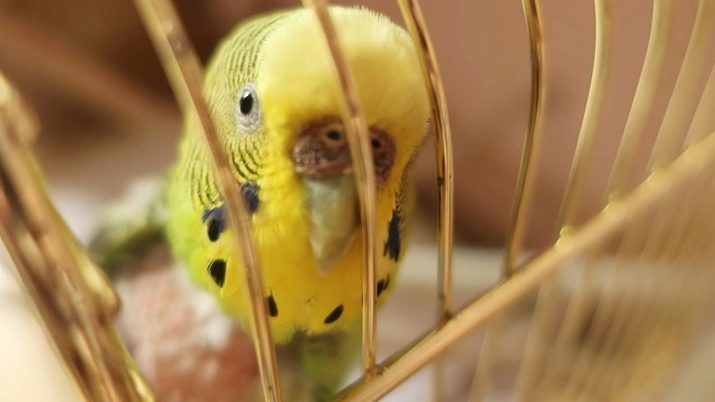
Now consider what the nuances of taming the parrots are, depending on their features.
Previous place
Wavies from stores get used to living in cramped cages from birth without much human concern. This means that getting used to your personal home and the owner will not be so easy. But with proper care and patience, everything is fixable. Over time, such birds get used to the host no less than birds grown at home.

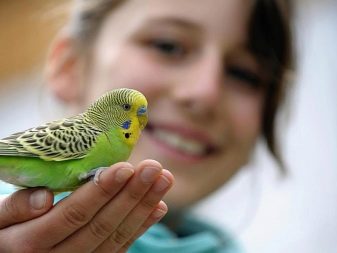
Age
The younger the individual, the easier it is to adapt to new conditions. This rule is relevant for all living things and is not in doubt. This is also confirmed by the opinion of scientists who observed the wavy. The optimal age for training is called 5 months. Younger chicks, of course, will also adapt well to new housing, but their taming may take a little longer. Even more time to consolidate human communication skills will require a more adult bird.
Often people take to themselves already adult birds, which due to circumstances have lost their owners. It is usually easy to tame such an individual. Worse, if the bird managed to survive the difficulties, for example, it was forced to live alone for a while. This is an overcome problem - it’s enough to talk with her every day, allocating at least an hour to it. It is much worse if the old family mistreated her - then the chances of gaining the trust of the bird are significantly reduced, and only care and attention can change her attitude towards people.
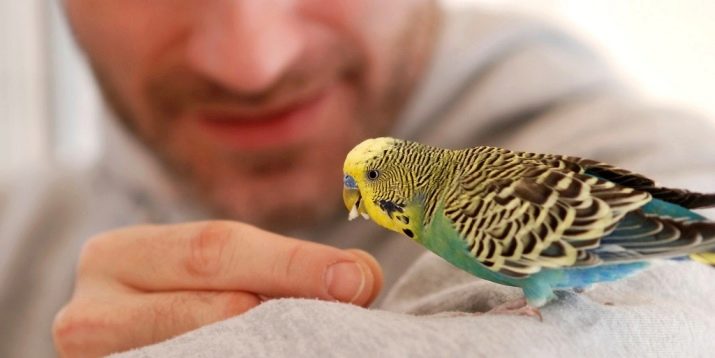
Floor
Girls are tamed a little worse than boys, and indeed, it is more difficult to train them. Usually they need at least three weeks to get used to the person. There is an opinion that parrots also learn speech more slowly, although in the end their vocabulary is greater than that of males, and the pronunciation is clearer. Usually parrots are taught to speak in parallel with taming. By the way, taming a couple of parrots will have to do this individually.
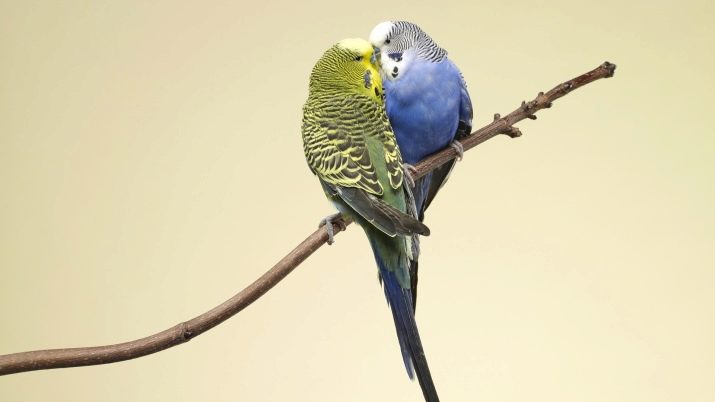
Creating conditions
Stress and separation from relatives are inevitable travel companions. For the first day or two, the parrot is usually sad, sits with a cracked tongue, and bites poorly. In the budgie cage, everything must be thought out for life. Then his adaptation will be faster, which means that he will be ready for taming earlier. Equip the cage in advance:
- feeding trough;
- a drinker;
- with stools for sitting.
Over time, the "furniture" of the parrot can be replenished with various swings, bells, toys, and a mirror. By the way, it is recommended to carry the bird from the store not in the cage, but in the carrying. However, a reliably closed box with air holes is also suitable. Think over the design: you will need to put it near the cage so that the parrot from it immediately goes into the cage. As for your apartment or house, be sure to install reliable mosquito nets so that the parrot probably does not fly out the window.
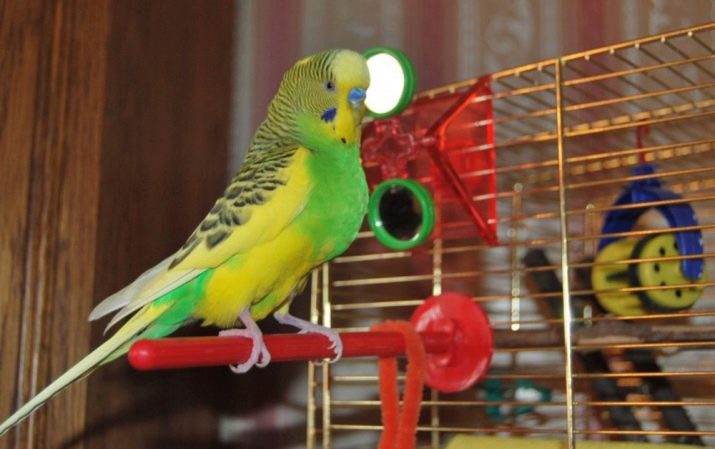
Easy ways
To make the baby better contact during classes, and become manual as soon as possible, follow these simple rules:
- spend them in the morning and only if the parrot is in a good mood;
- take the feeder out of the cage for the night - then a hungry pet will more readily begin to take food from your hands;
- when starting training, better not wash your hands with soap or refrain from using creams, as smells scare away birds;
- do not smoke before classes.

Even following the recommendations, achieving the task is sometimes very difficult.If this is your case, then we suggest you study the step-by-step instructions for taming a bird in different ways.
A toy
- You need to carefully watch him for a while. Try to study the character of your fearful budgie - what he likes to do when he thinks that no one sees him: some prefer the swing, others beat the bells, others try to move small objects. In order to establish what kind of entertainment the wavy favorite, try to put everything in a cage in it: balls, candy wrappers, rags, etc.
- When the parrot finally “pecked” at one of them, you can start taming it with your favorite toy. Gradually slide it to your hand so that it jumps on it.
This painstaking task can last for several days, but sooner or later it will certainly succeed. When the pet loves to sit in your arms, you can teach him to fly out of the cage to pile up on your shoulder and talk with you.
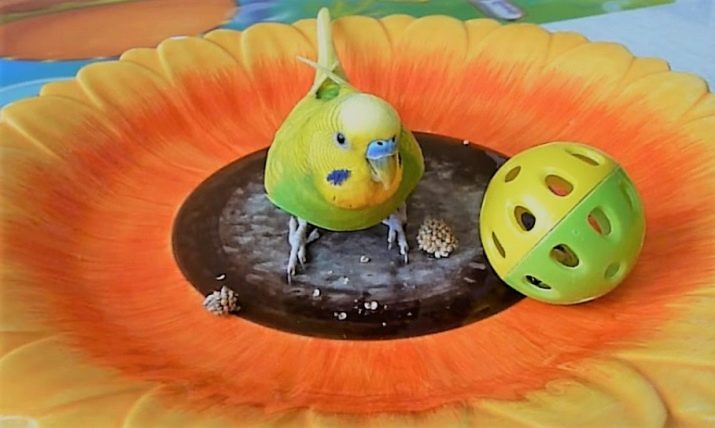
Food
- Reveal your favorite parrot treat. To do this, put different grains or pieces of fruit in the feeder and determine what he likes best. Then take this ingredient and give it only for training.
- Pull some goodies on his finger through the cell grid. If he does not start eating right away, then wait a few minutes. Failure should not upset you - just try again in time. When the parrot finally pecks from your hand, be sure to praise it.
- Show your food hand through the open cage door. You don’t need to go deep into it - just wait for it to come.
- Next, offer sweets to the feathery outside the walls of the bird house. Move farther away from the cage so that it has to fly before you, but never run after it with food yourself. At first, he will fly away to himself in order to eat prey in safety, but then he will certainly infuse confidence in you.
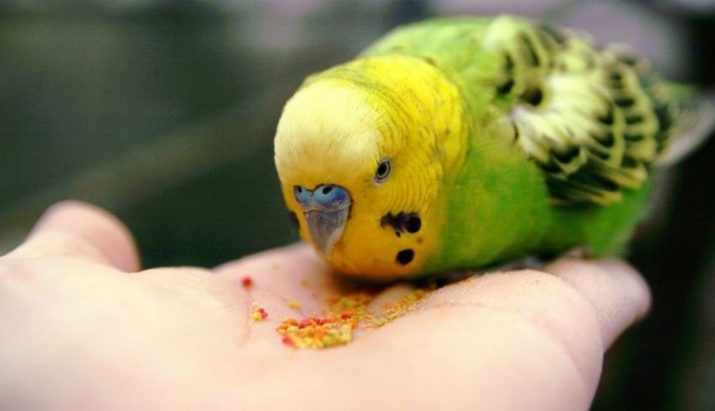
What is not worth doing?
So that the process does not stall or bring back results, which also often happens, avoid some actions when dealing with a parrot:
- prohibited in the very first hours of being in a new house stick a hand in the bird's house and offer to peck food from the palm of your hand;
- try to stroke the bird when he has not yet "matured" for this;
- try to pick up a bird by force - so she is not only very scared, but she can also injure herself;
- cut the wings;
- scold the pet because he pecked or even bit you;
- waving hands over the head of a budgie - like any representative of birds, he perceives such actions as a danger at the level of genetic memory.


Possible problems
Trying to tame the budgerigar, many owners encounter a number of difficulties preventing it. Here are the main ones.
The bird, in principle, does not want to contact a person
Fear of hands is quite justified, because in the wild they are not friends with humans. To get rid of this problem, they use the method of positive reinforcement, that is, as soon as the pet has done the right thing (sat on his arm), he receives praise, food or a toy.
Usually this problem is solved over time, because parrots are very sociable creatures by nature and they do not like loneliness. If you show more patience and surround your pet with care, and most importantly, you will not make mistakes during training, then success will definitely come. To make your pet more interested in you, try the following:
- if the bird is alone in the cage, offer her an “animated” toy that she can take care of;
- even parrots love to play with ballpoint pens and caps;
- put a feathered little mirror in the house - he will be delighted with such a new thing and will be happy to look at himself in the mirror and talk to himself, which will help him not lock himself up.
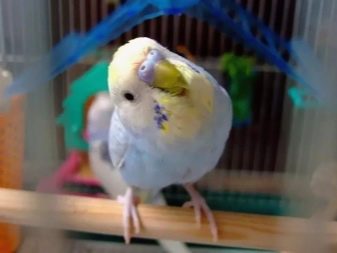

Refuses to return to the cage
This often happens if the parrot flew from your hand during a taming training. He can circle the room or fly from item to item. This can be dangerous for the bird, for example, if the window is not curtained, and it swings into the glass on a grand scale, and even causes inconvenience to the owners. To correct the situation, there is the following way: wait until dusk sets in, it is important to remember where the feathered bird sits, and in the dark carefully transfer it to the cage.
When he finds himself in the house, then you can not worry about the further fate of the pernatic. When the light is turned on, he will calmly react to the fact of movement. In addition, now he will be in your hands, and this will once again show him that a person is not a danger.
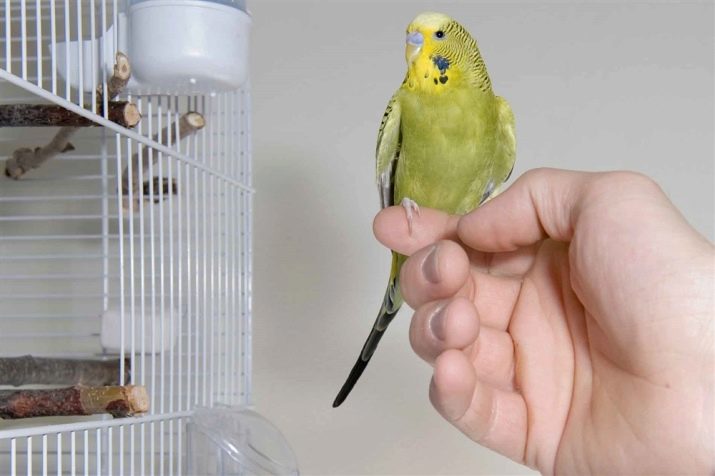
Bites
When feeding birds, some hosts are bitten. It is clear that this was done not from evil - the parrot simply did not calculate the movements. It happens with kisses with a pet who is not so gentle on the process as the owner. Often such incidents occur with very young birds - so they, like children, learn the world. And when the owner puts his hand into the cage, the parrot can take it as a call to the game, and just peck on the finger, like a branch to hold on.
All the above “bites” occur rather by accident than intentionally. But there are times when a parrot bites for protective reasons. This can happen to frightened birds or during the mating season. First of all, do not shout back - try to restrain emotions, especially negative ones. The baby can be flicked lightly on the beak, saying “no,” but you can re-educate the adult by leaving the room with an offended look.
Budgerigar can be a great friend for all family members. Tame it step by step, step by step, taking care of your bird.
Let the feathered one understand that he now has a house and loving households - then he will give you a lot of pleasant emotions every day.
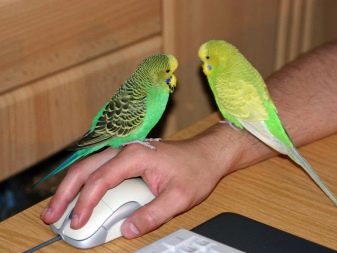
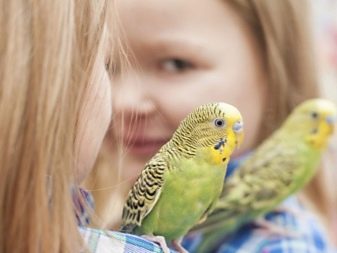
Learn more about the secrets of taming budgies in the video below.
